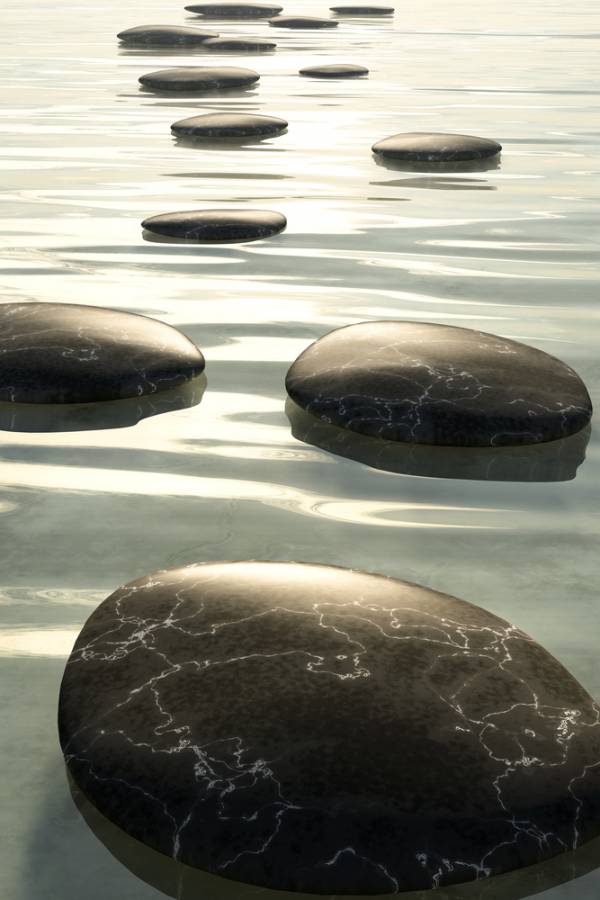I don’t think I was ever formally taught to flow roll in Brazilian jiu jitsu. Just as I pretty much learned how to tie my belt through osmosis and enculturation, I slowly divined what flow rolling is in comparison to what my instructors said it isn’t. Well, it was partly this and partly cluing into the annoyance some of my higher-ranked training partners would exhibit when I excitedly agreed to flow roll with them without fully understanding what I had agreed to. I suspect they were annoyed because when we gripped up, I probably just did the same thing I usually did, which is to say, go full spaz mode, trying desperately to win, and maintaining in my body the tension of a fully stretched rubber band.
I don’t blame my instructors. It doesn’t seem to be something that requires much explanation. You just roll fluidly and in a relaxed manner, and you experiment with movements you might be reluctant to try at other times, because in this situation you and your partner are both going at a fraction of competition speed and intensity. Crystal clear.
But after I thought about it more, I realized that based on what I’ve seen and experienced, the concept of flow rolling may be simple, but that doesn’t mean the execution is easy. This makes it much like many other aspects of Brazilian jiu jitsu. Just as with jiu jitsu in general, effective flow rolling is not simply a constellation of techniques or set of instructions. The whole is greater than the sum of its parts, and it has both intentionality and proprioceptive components. So when people ask me how to flow roll effectively, they sometimes find my response unexpected because I encourage them to think about the development of a mindset and a sensitivity to movement rather than giving them a step-by-step list of action items. I cue them to think about their feelings and their intentions. I can’t help it. It’s the child of two shrinks rearing her ugly head. Bear with me.
When I think about the word “flow,” here are some other words that come to mind:
- River
- Syrup
- Creativity
- Lava
- Smooth
- Glide
Here are some words that definitely do not come to mind:
- Crush
- Broken
- Destroy
- Insist
- F*ck you
- Carnage
Try this exercise yourself. Make a list of words that do and absolutely do not come to mind when you think of the word “flow.” Next, notice how you feel when you contemplate the first and second lists. Based on how you feel, how would you characterize the energy are you likely putting out into the world (toward your grappling partner, say), when you contemplate the words on the first list? What about the words on the second list? Can you feel the differences in your body as well as registering them in your mind?
 Then, extrapolating from there, ask yourself how you are likely to train with a partner if you have words from the first list in your mind while you are rolling. What about the second list? There are likely to be some differences, aren’t there? Are you more or less likely to feel collaborative? Aggressive? More or less willing to make yourself vulnerable? Obviously I am expecting a certain kind of answer, but even if you don’t sense the difference I’m proposing as much as I’m anticipating you will, see if you perceive it even a little.
Then, extrapolating from there, ask yourself how you are likely to train with a partner if you have words from the first list in your mind while you are rolling. What about the second list? There are likely to be some differences, aren’t there? Are you more or less likely to feel collaborative? Aggressive? More or less willing to make yourself vulnerable? Obviously I am expecting a certain kind of answer, but even if you don’t sense the difference I’m proposing as much as I’m anticipating you will, see if you perceive it even a little.
This is why flow rolling has both an intentionality and a proprioceptive component. If I think, “I want to destroy,” it will register in my body, and the feeling in my body will reinforce the thought, and so on. I also firmly believe that others can sense our intentions and what we’re putting forth energetically. And whether or not it registers consciously, it registers in our bodies and our physical reactions.
This is also why flow rolling is difficult. It requires us to have a level of self- and body-awareness that not all of us have. Even if we do have it, maintaining it for the duration of a roll is difficult, especially if our partner is having the same difficulty. How many of us have gone into a roll planning to flow, in complete accord with our partner, only to let all that go to crap the first time we were faced with giving up position? I’ve been a real chump about this lately, asking people to train light because of a knee injury I’m still nursing, and ending up thirsting for blood. (What do you know? Turns out my knee can handle going harder when my ego forces it to.)
Sadly, I only notice it at the end. It’s like highway hypnosis: I’ve driven on autopilot and then snapped out of it at the end only to realize I’ve arrived at my destination, but in this case, my destination is a level of stress and aggression I specifically intended at the beginning to avoid. (I have a sense of why this is happening, but that’s a story for another time.) If I have done the old bait and switch on you recently – or ever, for that matter – I apologize and resolve to do better.
 Of course there is a time and a place for hard, intense training. But there is also a time and a place for more exploratory movement, and we should not offer our partner one and then deliver the other. So what can we do to make sure we flow when we say we’re going to? How do we learn to flow in the first place?
Of course there is a time and a place for hard, intense training. But there is also a time and a place for more exploratory movement, and we should not offer our partner one and then deliver the other. So what can we do to make sure we flow when we say we’re going to? How do we learn to flow in the first place?
By paying attention to our intentions, to our states of arousal and aggression, to our relative level (or lack) of physical relaxation. By asking our partner for feedback at the end of a roll about whether we were flowing, especially if we decided at the outset of our roll that we were going to. By practicing doing gut checks in the middle of rolls and chilling out when we need to. By working at it consistently over time, the way we do with any other aspect of jiu jitsu.
These are some of my suggestions, ones I even sometimes take myself. Do you have difficulty sometimes staying in the flow state when you roll? How do you keep yourself honest? Calmly post suggestions to comments.
Photos courtesy of Shutterstock.






